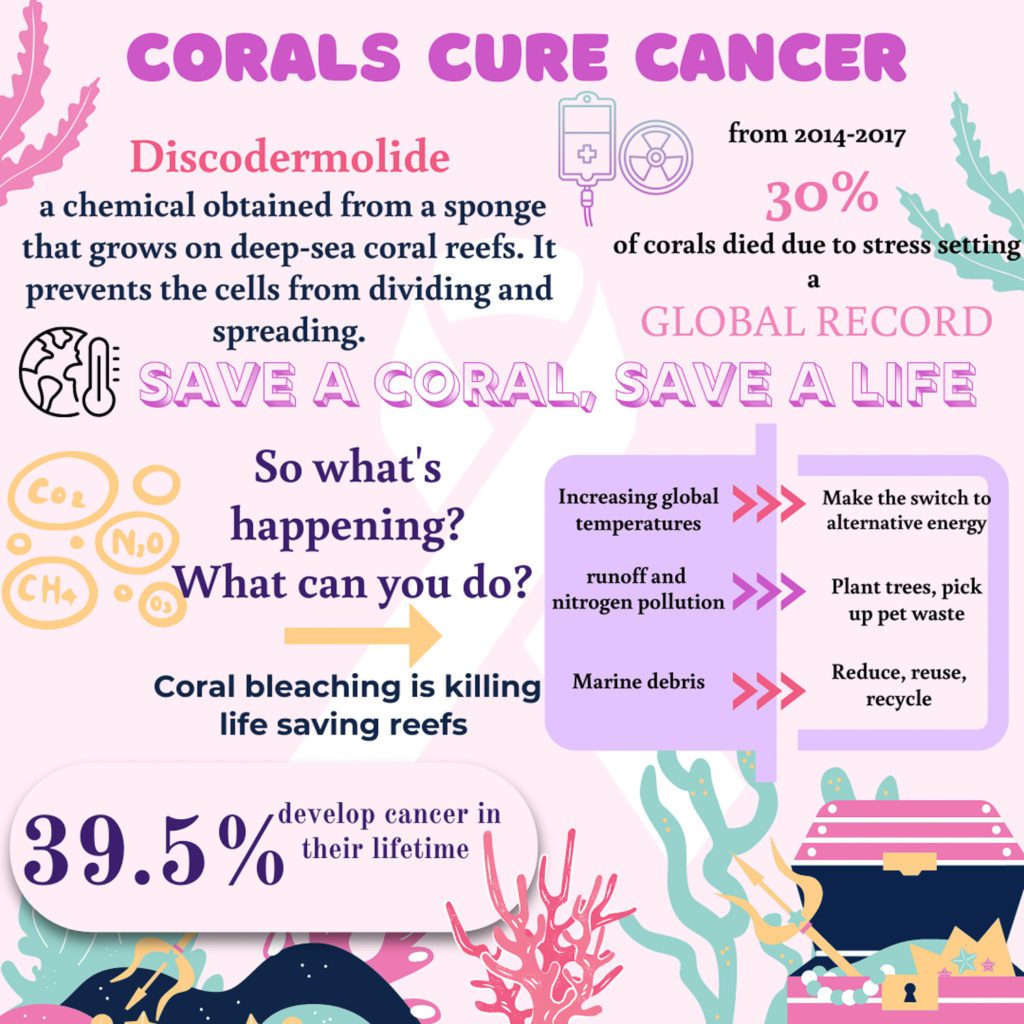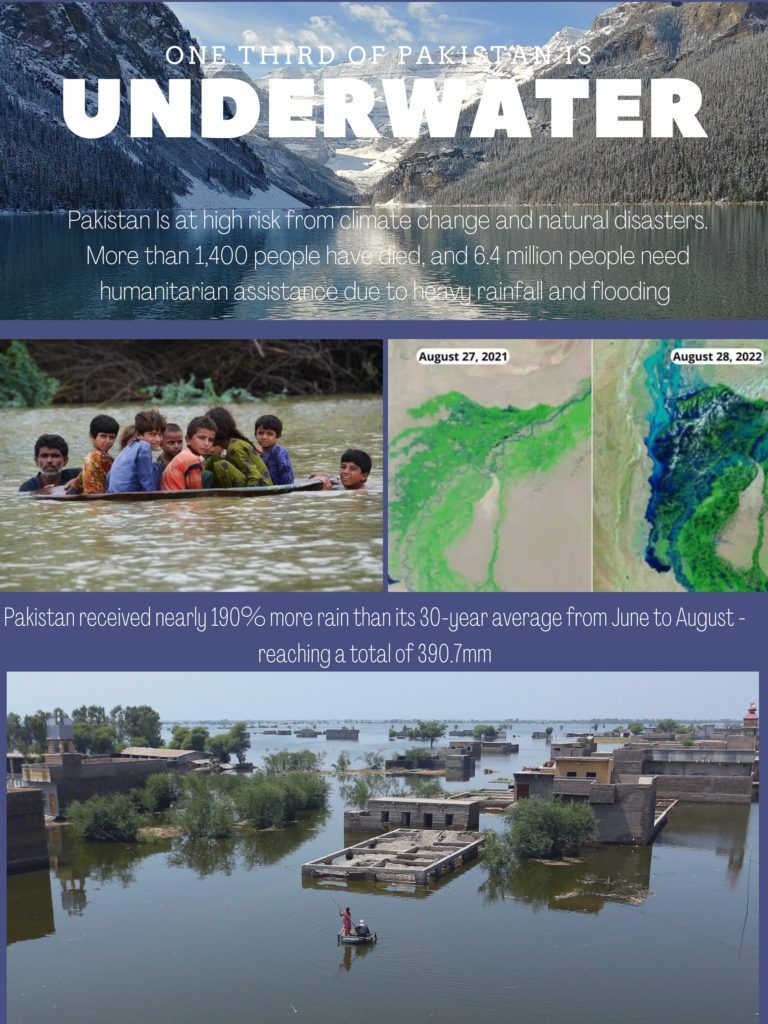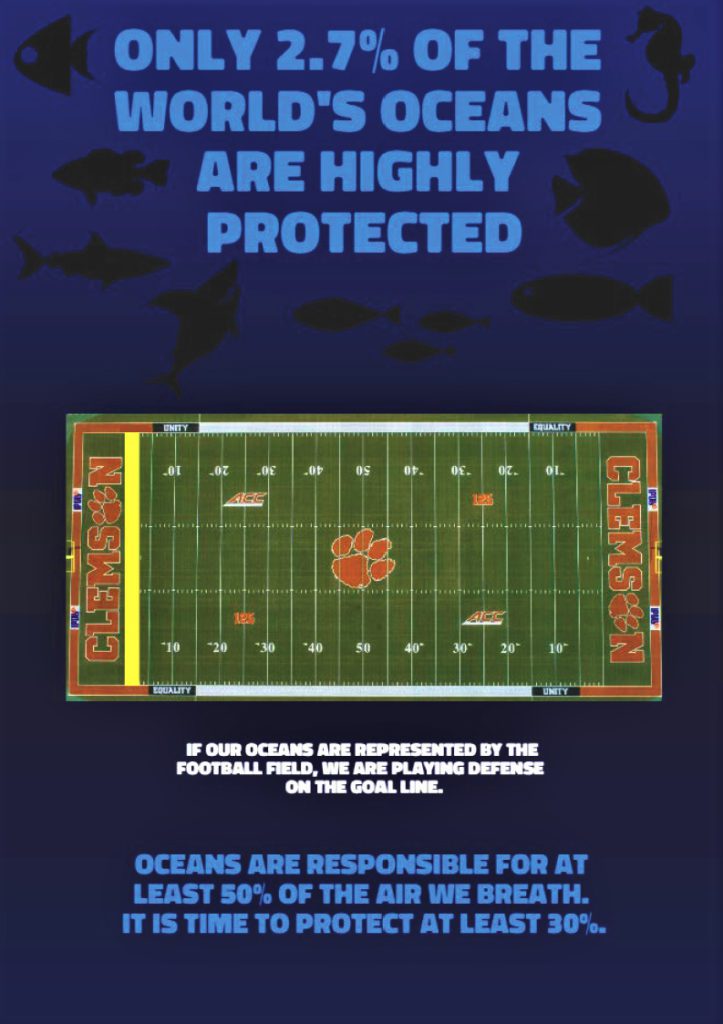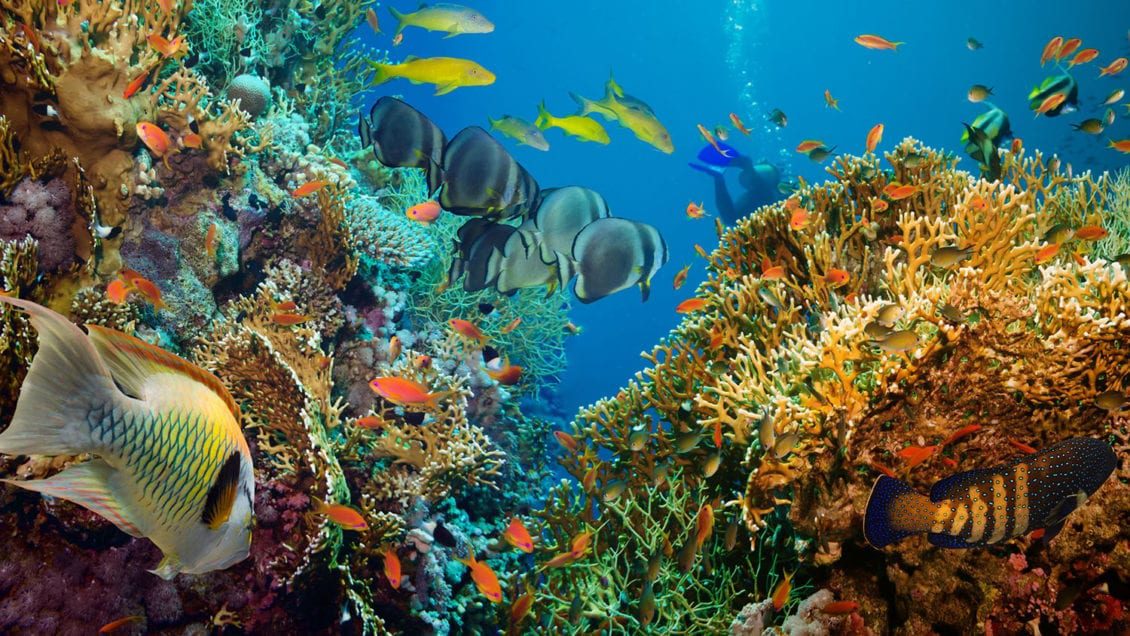Concern for our oceans is growing.
Oceans, which cover over 70% of our planet, produce more than half the world’s oxygen, serve as a source of food and jobs, regulate weather patterns and house much of the Earth’s biodiversity.
However, climate change has led to increased water temperature, rising sea levels, changing currents and ocean acidification. Recently released research says 2021 had the hottest ocean temperatures in recorded history. It was the sixth consecutive year the record was broken.
But scientists’ warnings that action must be taken have been largely ignored by the public and elected leaders.
Getting them to listen
How do you get them to listen? That was the question students in Michael Childress’ new “Ocean and Climate Sustainability” class tried to answer during the Fall semester.
“A lot of times when you hear about global warming and climate change, you don’t automatically think ocean. At least, that’s not what I thought of before I took the class,” said Sophie Waugh, a first-year microbiology major from Annapolis, Maryland. “Getting people to understand how important it is to protect our oceans is the big step we need to take toward fighting global climate change.”

The new class helps fulfill Clemson’s new general education requirement that students earn six credit hours in courses that address global challenges.
“I saw an opportunity to develop a class that would reach students beyond STEM majors on a topic that impacts everybody on the planet,” said Childress, an associate professor in the Department of Biological Sciences.
Oceans and climate change
Childress’ research focuses on studying the impact of climate change and habitat loss on marine communities in the southeastern United States. “The goal wasn’t just to bring students up to speed on all the science that has been done on climate change and ocean sustainability. It also emphasizes the importance of working together to address a global issue and why efforts to communicate the problem haven’t been widely successful.”
As part of the class, students developed an infographic, cartoon or video artifact communicating a critical concept in climate or ocean literacy to be shared with the public. They also evaluated its effectiveness by looking at interactions such as views and likes.
Kailey Kocur, a junior majoring in environmental and natural resources, focused on flooding in Pakistan, a country deemed at high risk from climate change and natural disasters. During the 2022 monsoon season, Pakistan received nearly 15 inches of rain, almost three times more than the national 30-year average. The floods killed at least 1,739 people and displaced at least 7.9 million people.

“My primary goal is to shed light on people who don’t have as many advantages as we do, that may live in the lower socioeconomic demographics,” she said. “I wanted to ensure that everybody knew what was happening in the world, even if it’s not happening in our main news stream.”
Kocur’s infographic received little interaction on Facebook but reached 1,500 views on Reddit.
Waugh’s artifact connected ocean health with human health. Some chemotherapy medications come directly from coral. When water is too warm, corals will expel the algae living inside their tissue, causing the coral to turn white.
“I thought that can really resonate with people because everybody knows somebody who’s had cancer or has had cancer themselves,” she said. “Because coral bleaching is so prevalent, we’re losing that source of medication, and we don’t know another way to source it.”
Waugh said the method she used to share her infographic wasn’t as targeted as it could have been. If she had to do it over again, she’d probably post in a health-related sub-Reddit to reach more people interested in the subject.
She posted her infographic on Twitter on a group page created for the project.

Robert Raynor, a first-year student from Boiling Springs majoring in marketing, capitalized on the popularity of Clemson Football in his social media asset. Only 2.7% of the world’s oceans are fully protected. To illustrate, Raynor marked 2.7 yards of the 100 yards of the field in Memorial Stadium.
“I wanted something that targeted Clemson. Everybody is familiar with a football field. It was an easy way to show how little of the ocean is protected,” he said.
When he posted on the Clemson University Reddit stream, it received 3,600 views and a 54% upvote.
Waugh said it’s important that students use social media to communicate about global issues.
“I think people will listen to us because we’re the next generation. We’re the future,” she said. “If people in our generation can use the power of social media to shed light on problems like ocean conservation, it would go a long way.”
The students said it’s also essential that the messaging be clear that it’s not too late to do something about climate change and ocean health.
“It’s crucial that people know there is still hope. If you look at the information and statistics, it looks pretty scary and bleak,” Raynor said. “But part of the message needs to be that it’s not too late to turn these things around and do things differently.”
Get in touch and we will connect you with the author or another expert.
Or email us at news@clemson.edu

